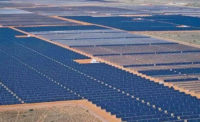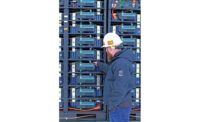Change may be coming in one of the ways distributed energy facilities get financed and built in the United States. Recent growth in renewable energy facilities that qualify under the Public Utility Regulatory Policies Act (PURPA) has utilities in certain states crying foul over the benefits these facilities receive under the law, which the utilities see as coming at their expense. Some proposed changes in the PURPA rules may be benign, but others could make it more difficult to secure the fixed, long-term revenue streams needed to make these renewable-energy projects viable for developers and contractors, or even to sell electricity from these facilities at all.
Enacted in 1978 in the wake of an OPEC oil embargo and natural-gas shortages, PURPA was intended to promote development of renewable energy and cogeneration through the creation of a new class of power producers that receive special regulatory treatment. Qualified Facilities (QFs), as they are called under the law, include small, renewable-power production facilities of 80 MW or less and cogeneration/combined-heat-and-power facilities that produce both electricity and thermal energy for industrial, commercial or cooling purposes.
The Energy Policy Act of 2015 scaled back PURPA in a couple of ways, the most important of which is exempting utilities from having to purchase from QFs larger than 20 MW in areas served by competitive power markets and open transmission grids.
Under regulations promulgated by the Federal Energy Regulatory Commission (FERC), QFs derive important benefits and protections, including the right to deliver (or “put”) their capacity and energy to electric utilities; the right to be paid the purchasing utility’s “avoided cost;” the right to obtain power and interconnections from the host electric utility; and, for QFs with capacity of 100 kW or smaller, the right to sell at standard rates published by the electric utilities.
QFs exercise their “put” rights on a long-term basis by establishing Legally Enforceable Obligations (LEOs) with their host utility. At the time of entering into an LEO, the QF can elect to sell at the utility’s avoided cost as calculated at that time, or as calculated at time of delivery. Because of the price certainty they provide, LEOs have proved important for financing projects.
The Energy Policy Act of 2015 scaled back PURPA in a couple of ways, the most important of which is exempting utilities from having to purchase from QFs larger than 20 MW in areas served by competitive power markets and open transmission grids. All of the Regional Transmission Organizations and Independent System Operator markets in the U.S. qualify for this exemption: PJM, MISO, ISO-New England, NY ISO, CAISO, SPP, and ERCOT.
But in areas of the country where PURPA still applies to the development of these facilities – including North Carolina, Idaho, Iowa, Utah, and Wyoming – explosive growth in QF projects has alarmed utilities and regulators. They fear that the proliferation of QFs will accelerate the retirement of existing power plants that utilities are invested in, and claim that reliability will suffer as a result. There also is a perception that fixed “avoided cost rates” invariably end up exceeding prices in the market.
PURPA Modernization Investigated
In February 2016, FERC commenced a proceeding to investigate PURPA modernization. Some potential changes under consideration include: allowing QFs to sell only at avoided costs calculated at the time of delivery; adopting a minimum and/or maximum term for LEOs; making rebuttable the rule that treats generation facilities located more than a mile apart as separate facilities for QF eligibility; and eliminating or lowering the 20-MW threshold below which small power producers in organized markets are given the right to deliver and sell power to utilities.
While nearly every one of these issues is controversial, there seems to be general support for FERC doing something about the potential for gaming the one-mile rule. FERC would no longer look just at how far apart two purportedly separate facilities are, but whether they are owned or controlled by the same person or an affiliate and several other factors. In this way, it could become more difficult for developers to build multiple QFs in proximity to one another.
But developers and contractors should also beware of regulatory proposals that could deprive them of the long-term revenue streams needed to secure financing, or even take away their ability to rely on QF status for selling their output to utilities. With rule changes like these, renewable-energy developers and contractors could see their business opportunities dry up in states from North Carolina to Idaho.
Glenn Benson is a partner at Davis Wright Tremaine LLP in Washington, D.C., and Arvin Ganesan is vice president of federal policy for Advanced Energy Economy, a national business association. A recorded AEE webinar on PURPA led by Benson and Ganesan can be found at http://info.aee.net/purpas-future-in-the-balance-webinar.





Post a comment to this article
Report Abusive Comment